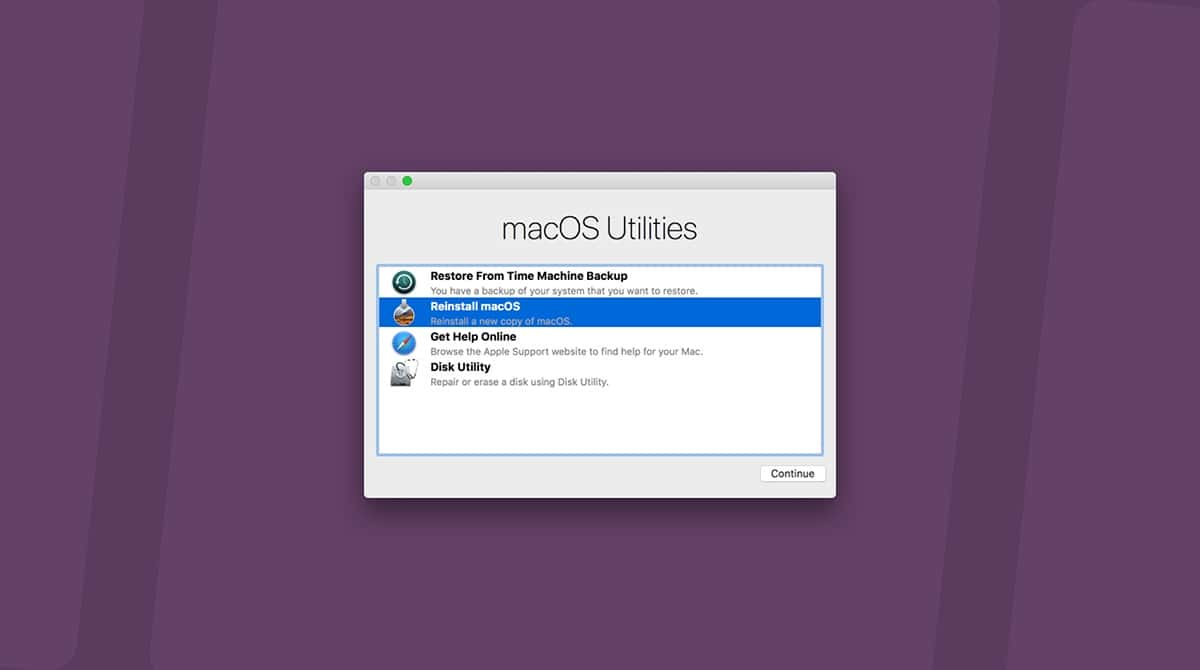Most of the time, your Mac just works, and you don’t have to worry about any of the stuff that’s going on in the background. You just start it up, log in, and get to work. One such app constantly running in the background is Keychain Access used to store passwords and any other account details that are needed for the usability of apps.
Sometimes, however, there are signs that all is not well. It is when you may see messages like “accountsd wants to use the login keychain” and “callservicesd wants to use the login” repeatedly appearing on the screen. In this article, we’ll tell you what stands behind these messages, explain why they keep asking for access to the login keychain, and outline what you should do about it.
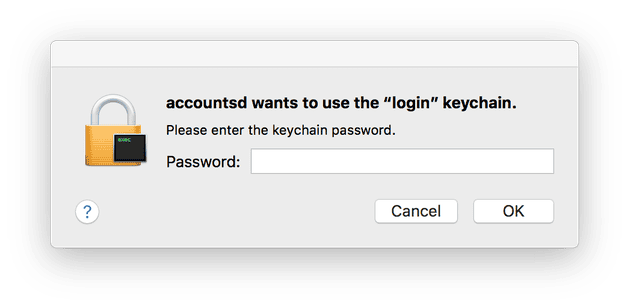
What is accountsd or callservicesd?
Accountsd is the Accounts daemon, part of the Accounts Framework, which starts login credentials for apps and services you use on your Mac. The framework allows app developers to build access to accounts into their app without them having access to your usernames and passwords. In order to work properly, the framework needs access to your Keychain, which manages usernames and passwords for accounts you use on your Mac. The accountsd notification probably means your login and keychain passwords are out of sync.
As for the callservicesd, it is another daemon. Unlike accountsd, it monitors call state. This means that it needs access to Keychain in order to ensure the proper work of services like FaceTime and Contacts as well as third-party video-conferencing tools.
Why does the message appear on my Mac?
When you first create a user account on your Mac, your login password and the password for your login keychain are in sync, and systems that need to access the login keychain can do so when you’re logged in.
However, if your login password and keychain passwords become out of sync, those systems will have trouble accessing your keychain and will have to ask for permission. This can happen if you or an administrator on your Mac changes your login password. The message “accountsd wants to use the login keychain” is an indication that those passwords are out of sync. The second message — “callservicesd wants to use the login” — may pop up because your Mac wants to sync calls between all devices you are logged in to.
How to fix the “accountsd wants to use the login keychain” message
As we said above, the message appears because your login password and the password for your login keychain are out of sync. So you need to fix that.
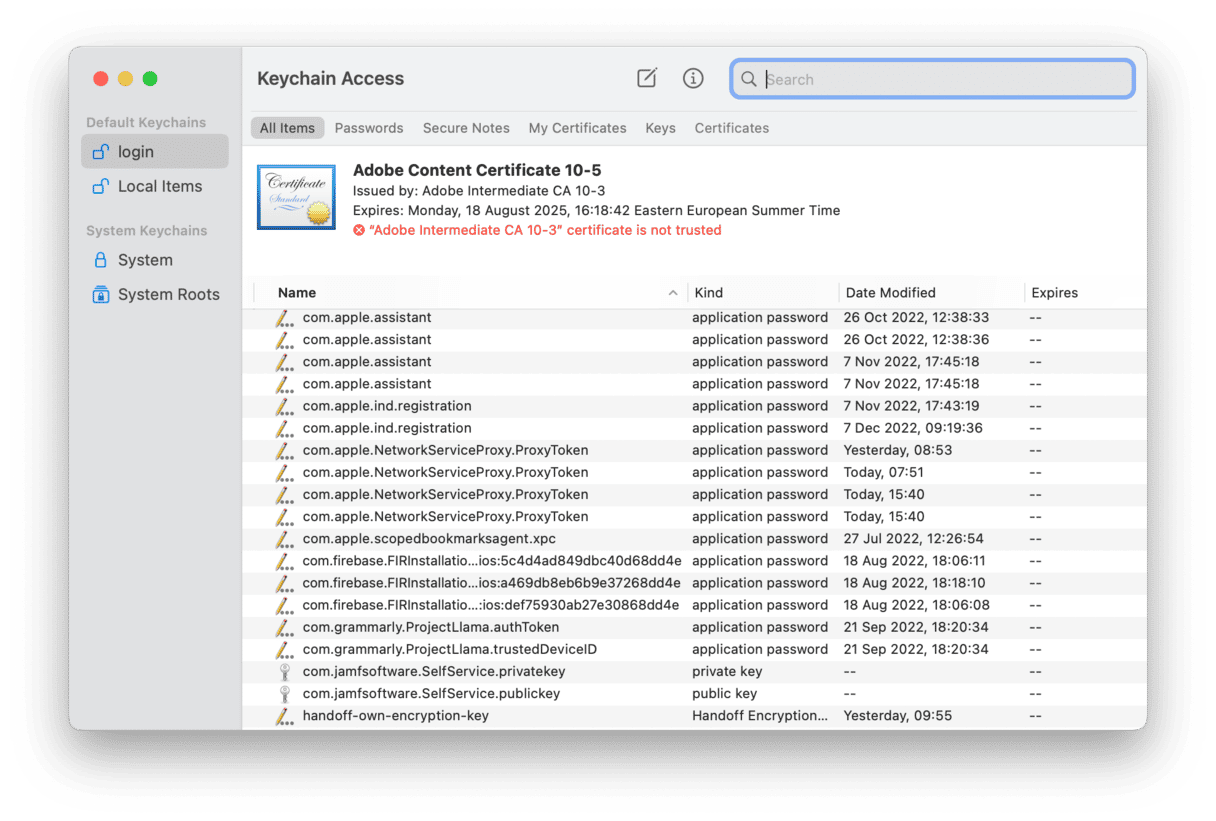
- Navigate to Application > Utilities and double-click Keychain Access to open it.
- Click on the Edit menu and choose Change password for keychain “login.”
- If the keychain is locked, enter the previous user password for your account. If you entered the correct password, you should see a new window appear.
- Enter the previous password in the box labeled Current Password.
- Enter your current user password in the New Password field.
- Type in the new user password again in the Verify field.
That should synchronize the login keychain and user login passwords, and you should no longer see the message.
Turn off Keychain Auto-Lock
Sometimes, the messages may pop up because some information is stored locally, even though you’ve turned on iCloud Keychain. If that is the case, turning auto-lock off may help. Here’s how to do it:
- From the Applications folder, open Keychain Access.
- Right-click login and navigate to Change settings for Keychain login.
- Make sure that both Lock after and Lock when sleeping are deselected.
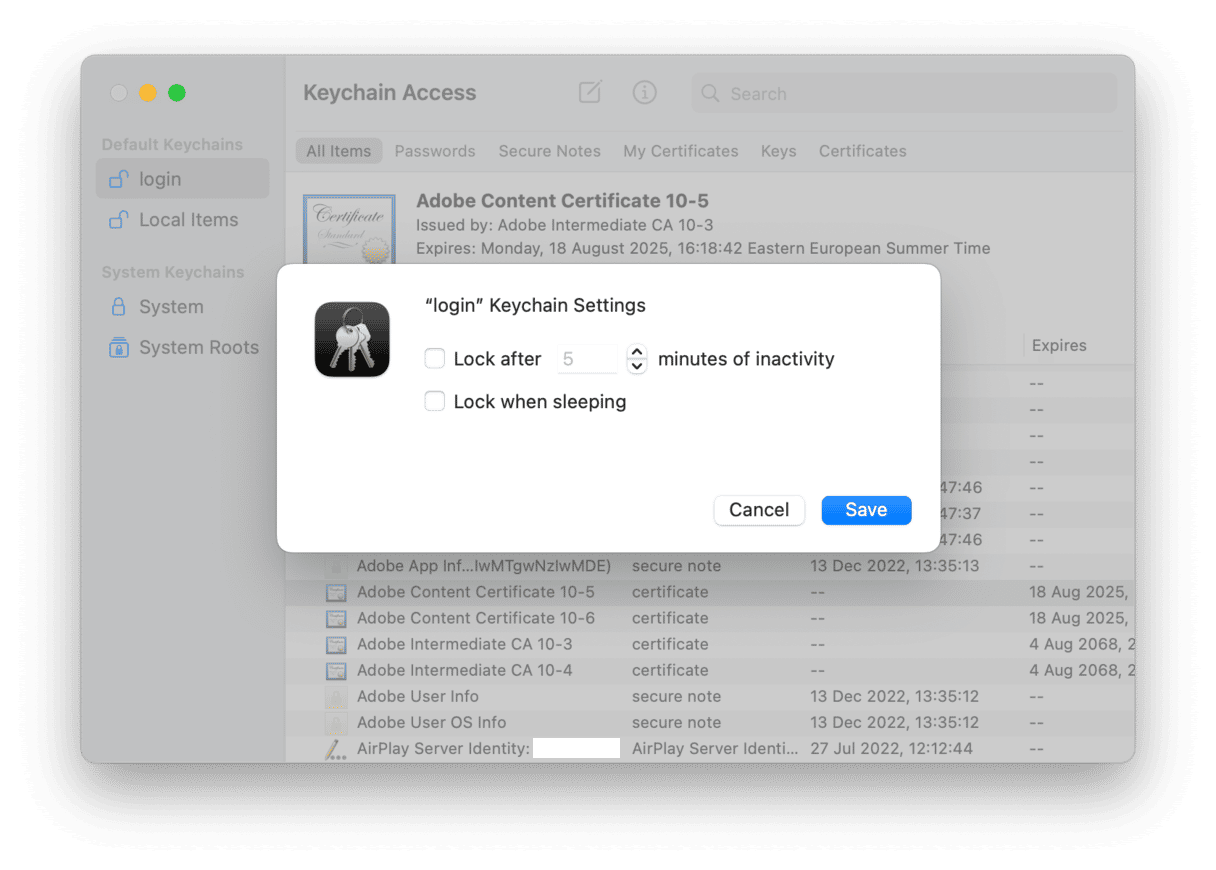
Create a new login keychain
If it doesn’t work, the next step is to create a new login keychain. Don’t worry, macOS retains your old keychain and all of its passwords and account details, so you can copy them to the new keychain. When you create a new login keychain, it will be given the same password as your user account. Before you do that, you need to make a copy of your existing login keychain.
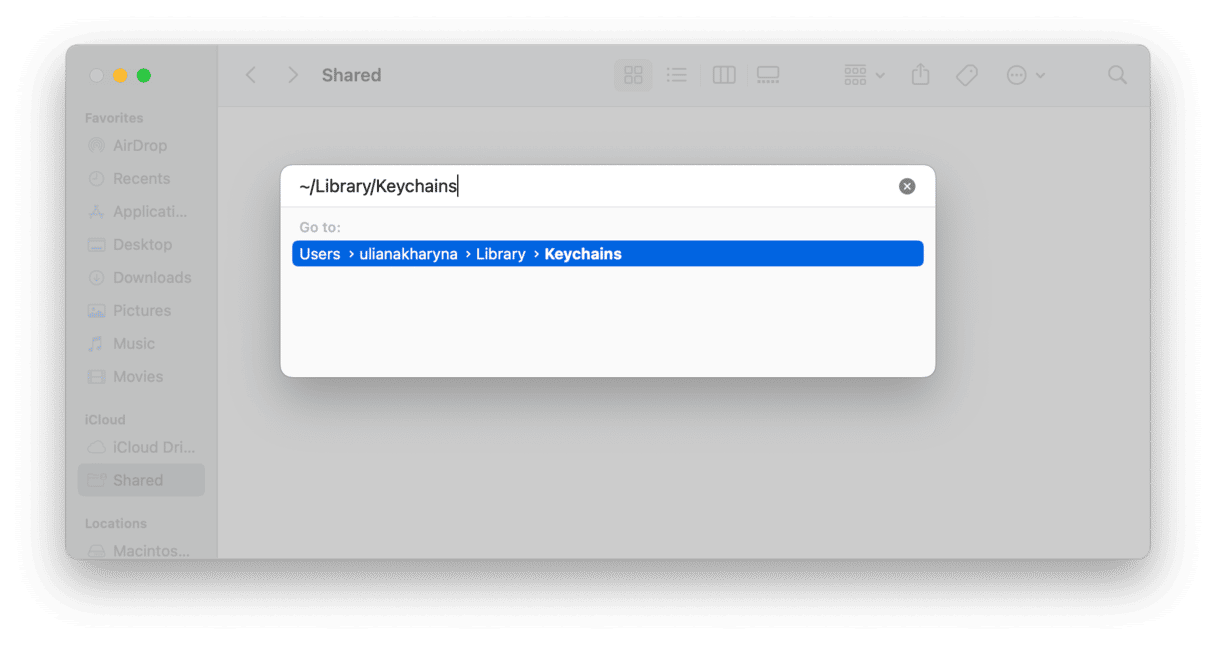
- In the Finder, click on the Go menu and choose Go to Folder.
- Type: ~/Library/Keychains
- Locate the login keychain and press the Alt/Option key and drag the file onto your Desktop.
- Click and hold on the name of the copied file on your Desktop, until the name is selected. Replace ‘login’ with a different name.
Now we’ll reset the default keychains
- Go to Applications > Utilities and open Keychain Access.
- Click on the Keychain Access menu and choose Settings.
- Click Reset My Default Keychains.
Keychain Access will now create new empty login and iCloud keychains, which will be given the same password as your user account.
Finally, add Keychain
- In Keychain Access, go to the File menu and choose Add Keychain.
- Navigate to the keychain file on your desktop and select it. Click Add.
You’ll see the keychain appear in the list of keychains in the sidebar in Keychain Access, with all your logins and passwords in it. - To copy an item from the imported keychain to your new login keychain, right-click on it in the imported keychain and choose ‘Copy [name of item].’
- Click on the new default keychain, right-click on the main window, and choose ‘Paste [name of item].’
You’ll be asked to enter the keychain password, perhaps more than once. Type in the password of the keychain you are copying from.
You only need to import your old login keychain and add its entries to the new one if you want to carry on using your Mac with the absolute minimum of disruption. If you use iCloud Keychain, most of your usernames and passwords will be stored in that and be automatically copied to the new iCloud keychain. For others, you will be asked to enter the username and password for accounts as and when required, and they will then be stored in the new login keychain. Adding the old keychain just provides an extra level of convenience and insurance in case you forget the passwords.
If you don’t already use iCloud Keychain, here’s how to turn it on on your Mac.
- Click on the Apple menu and choose System Settings.
- Click on AppleID and then on iCloud.
- Scroll down until you see ‘Password & Keychain’ or ‘Keychain.’
- Make sure it’s turned on.
- Quit System Settings.


Update your account permissions with CleanMyMac
Keeping passwords and user accounts secure by using keychains to store them is important in improving your privacy. But there are other ways you can do that, too. And CleanMyMac can help by sweeping up the traces you leave behind as you use your Mac.
These traces include permissions you’ve granted to applications to use your camera, microphone, boot disk, built-in apps, or other parts of this system that are protected. They also include browser and download history, saved passwords, and autofill data for all the browsers installed on your Mac. And, importantly, if you use a MacBook Pro or MacBook Air, they include the list of Wi-Fi networks you’ve connected to in the past. CleanMyMac can revoke permissions and remove data at the click of a couple of buttons.
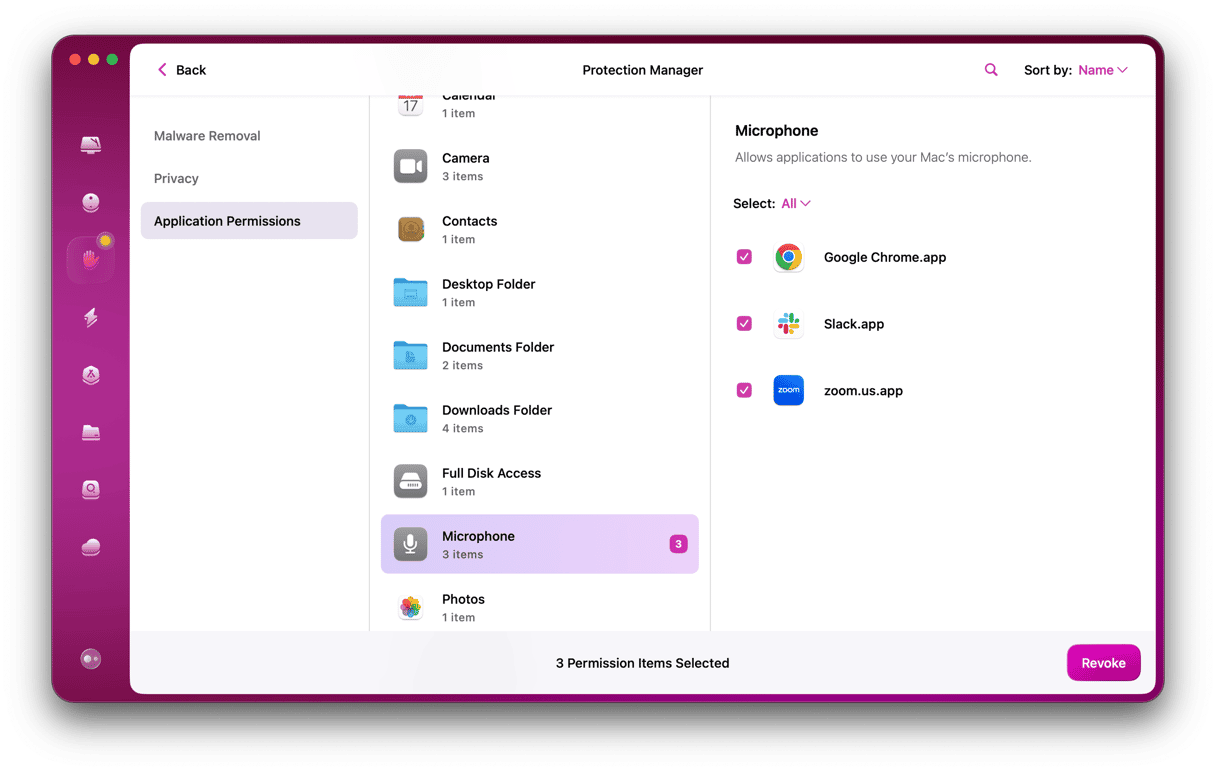
Here’s how to use it.
- Start your free CleanMyMac trial if you don’t already have it.
- Navigate to Protection and click Scan.
When it’s finished, you’ll see a list of things it has found, separated into categories, that could compromise your privacy. To view app permissions, click Manage Privacy Items > Application Permissions. Review them one by one and check the box next to any that you want to remove. When you’re done, click Revoke.
Clear up your internet-related items
Login keychain is a key tool used to protect your privacy by encrypting usernames and passwords for apps and services you use with your Mac. But there are other ways your privacy can be compromised. These include things as seemingly innocent as the list of apps you’ve opened recently or websites you’ve visited, to permissions you’ve granted to apps, like access to your FaceTime camera and Wi-Fi networks you’ve connected to in the past. It’s a good idea to audit this data regularly and delete what you no longer need. The simplest way to do that is to use the Recent Items List tool in CleanMyMac.
Here is how it looks in action:
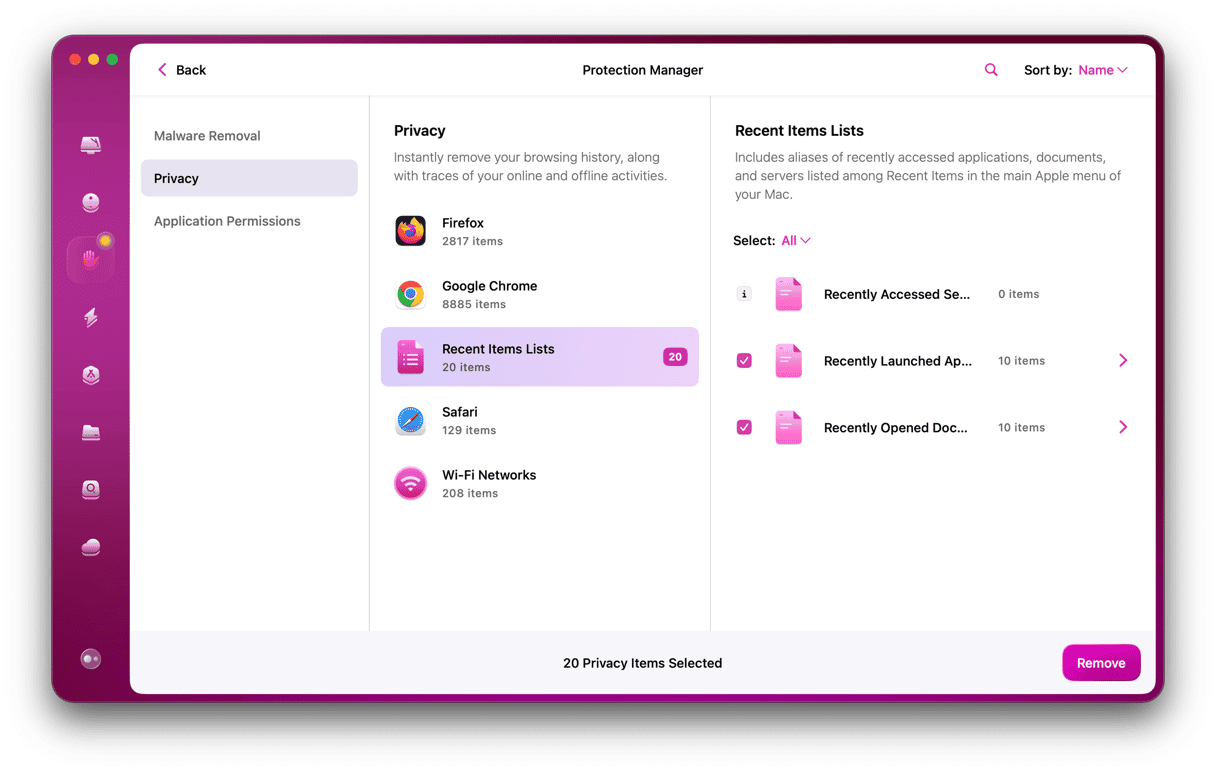
This clears up temporary details about:
- Recently accessed servers
- Recently opened applications
- Recently opened documents
Has it fixed the issue with accountsd? Apparently, the pop-up shouldn’t come up again.
As you can see, as well as the inconvenience of the “accountsd wants to use the login keychain” and “callservicesd wants to use the login” messages, there are a number of other issues you can run into with keychains. And many users find them confusing and daunting to manage. However, Keychain Access makes it quite easy, and by following the steps above, you can get rid of the message and fix other keychain problems. And remember, CleanMyMac can help protect your privacy in lots of ways, too.






